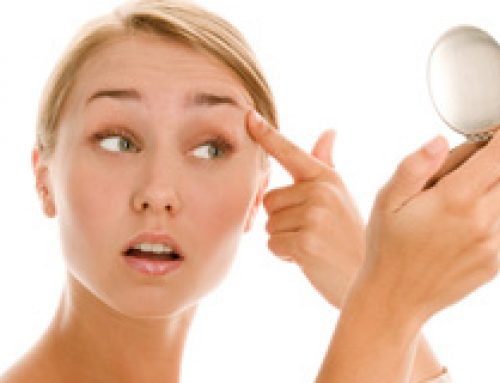Botulinum Toxin (Botox)
Skin Deep Medical healthcare professionals are trained to use the following Botulinum Toxins e.g. Botox/Vistabel. Dysport/Azzalure and Xeomin/Bocouture. The FAQS below are applicable to all products.
What exactly is Botox?
Botox is a purified protein produced by the Clostridium Botulinum bacterium. It is a non-surgical, physician-administered treatment that can temporarily reduce moderate to severe lines and wrinkles.
What does treatment involve?
Very small doses of Botox are administered via a few tiny injections directly into the muscles that cause those stubborn lines. The treatment takes about 10 minutes and no recovery time is needed.
How does Botox work?
In laypersons terms, Botox simply keeps the muscles that cause frown lines from contracting. This causes the skin to become smoother. Normally your brain sends electrical messages to your muscles so that they can contract and move. Botox keeps that message from getting to the muscle that causes the wrinkles.
Where can Botox be used?
The most common areas are frown lines, forehead lines, and crow feet. Other areas include the neck and upper lip.
When will I see results from a Botox treatment?
Within a few days, you will see a marked improvement. Lines continue to improve for up to a month. In clinical trials, nearly 90% of men and women rated the improvement in their appearance as moderate to better 1 month after treatment. After treatment, the skin around the treated area will look smooth and less wrinkled. The rest of your face will not be affected. The untreated areas of your face to move as normal and you will be able to laugh, smile and frown, but with less wrinkling!
How long does Botox last?
This depends entirely on the patient, but a single treatment of Botox will normally be sustained for approximately three months. You will notice a gradual fading of its effects. At this point you will return to Skin Deep Medical for your next treatment. Usually, Botox treatment is required only three or four times a year.
Who should administer Botox?
Healthcare professionals (Doctors, Nurse Independent prescribers and dentists). It is a prescription only medicine (POM) therefore beauticians, beauty therapists and other non-medics are not qualified to inject Botox. Always ask the healthcare professional if they have been trained and certificated to use Botox, are properly insured and how long theyhave been treating clines (in other words, how much experience they have).
When should I start using Botox?
Traditionally, Botox is well-known for removing or reducing wrinkles, but it is excellent for the prevention of lines appearing. As one gets older the loss of elasticity results with lines appearing when muscles move such as frowning. If Botox is used to prevent excessive frowning then the lines will not appear in the first place.
Is treatment with Botox painful?
A very tiny needle is used for the procedure. Discomfort is usually minimal and brief. Prior to injecting, the erae to be injected can be numbed with a cold pack or local anaesthetic cream. The entire procedure takes approximately 10 minutes and once the injection is complete, there is usually no discomfort. Many people are in and out of the clinic without downtime following treatment. You can drive immediately after treatment and go about your usual activities.
What will happen to the frown lines between my brows if I choose not to continue treatments?
No. Your lines will gradually revert to their pre-treatment appearance.
What ages can Botox treat?
Botox can be used from 18 up to 65 years.
Will Botox remove all lines and wrinkles?
Deeper lines and lines which have been present for many years may not be completely removed. Such lines will require to use of dermal fillers. However, you should think about the look you want to achieve before removing all lines.
Will my facial expressions continue to look natural?
Although the results are visible, a treatment with Botox will not radically change your facial appearance or make you look as if you “had work done.” The muscle activity that causes frown lines between the brows is simply reduced, so you can still frown or look surprised without the wrinkles and creases between your brows. Being 100% wrinkle free doesn’t always look natural. The idea is to enhance your natural looks not alter them.
What are the alternatives to Botox?
Dermal filling agents such as Restylane may help eliminate deeper expression lines.
Will my treatment need to be topped up?
The Healthcare Professionals providing treatment are highly skilled and in most cases achieve the result you are looking for. In a few cases, usually patients that haven’t been treated with Botox before, it may be necessary to have the treatment reviewed and adjusted. Adjustments are carried out between 3 and 5 weeks post treatment and are part of the service provided by Skin Deep Medical free of charge.
Is Botox affordable?
When considering your facial aesthetic options, Botox is quite affordable. According to an American Society for Aesthetic Plastic Surgery survey Botox is one of the low-entry-cost facial aesthetic procedures in the United States. Like other appearance-related investments, such as hair cuts and colouring, teeth whitening, and chemical peels, the cost must be weighed relative to your expectations.
Is Botox safe?
Botox is recognised as one of the safest cosmetic treatments. Side effects are rarely serious and always temporary, which is why it is now the most popular cosmetic treatment in the world.
Botox injections have been used safely and effectively for over 20 years to treat many eye and neurological conditions. These include spasticity and cerebral palsy in children and medical indications in very high dosages, all with no long-term side effects recorded. Botox has been used for cosmetic purposes successfully for many years. It is licensed in 13 countries for cosmetic use and has Food and Drug Administration (FDA) approval, which is extremely difficult to achieve.
What are the side effects?
Some of the possible side effects include bruising at injection area, headaches, temporary eyelid droop, nausea and cold and flu-like symptoms. The most common side effect is bruising. To avoid bruising don’t take aspirin, anti-inflammatory tablets or vitamin E for 48 hours before treatment. Rarely a transient numbness may develop in the treated area. If you are pregnant or breast feeding the treatment is not recommended.
Is there any reason I shouldn’t have treatment?
During your consultation, a full medical history will be taken to assess any risks that would preclude treatment. We recommend you follow the advice on the post treatment advice leaflet you will be given following treatment.
Who should not use Botox?
Botox® is extremely safe and most people will be able to have treatment. Some of the most common reasons for not being suitable of treatment are litsed below but Skin Deep Medical’s Healthcare Professional will always go through a full consultation explaining the treatment in detail and a medical consent form prior to treatment.
- Women who are pregnant or breastfeeding. If you are currently trying for a baby, it would be wise to delay cosmetic treatment.
- Diseases that affect muscle activity
- Bleeding disorders or are taking drugs that affect bleeding time
- Some allergies requiring medication
Can Botox build up in the body?
When injected, the product is attracted to the nerve endings and is then metabolised and leaves the body completely within 21 days of administration. It is the result and effect of the treatment that lasts 4 to 6 months on average. Therefore, it is not possible to have a build up of the product.
Will my eyes or eyebrows droop?
The chance of this happening to a client is about 1 in 2,000. There is evidence to suggest that this may be as a result of the client massaging or pushes the area around within the first four days after treatment. If the eye does droop it will last no longer than 3 weeks and will usually correct itself.
Will it freeze or paralyse my face?
The treatment will have the effect of relaxing the treated muscle allowing the lines to re-hydrate and smooth away. You will still be able to make facial expressions. However, when your face it at rest the line will be greatly improved if not removed. The area feels exactly the same for the majority of clients although a small percentage do report a very slight restricted feeling in the area on the 2nd to 4th day after treatment.
Can I travel by air shortly after undergoing treatment?
Yes, you can fly immediately after having treatment.
Can creams that claim to contain Botox like substances can be as effective as Botox®?
There has been an explosion of inaccurate claims suggesting that creams produce results as good as Botox®. Botox® needs to be delivered by injection into the muscles that are producing lines. Creams quite simply cannot do this!
Botox is FDA-approved, what does that really mean?
In the United States, prescription drugs and biologics are required to undergo rigorous laboratory, animal, and human clinical testing before they can be put on the market. The Food and Drug Administration (FDA) reviews the results of these studies to verify the identity, potency, purity, and stability of the ‘ingredients’ and demonstrate that the drug is safe and effective for its intended use. Botox received FDA approval in 2002 and is available by prescription only.
What are Glabellar lines (frown lines)?
“Glabellar lines” are the wrinkles between the brows caused by the contraction of corrugator and/or procerus muscles.
Can Botox can be used to treat ‘sweaty armpits’?
Sweaty armpits or “Axillary Hyperhidrosis ” can be successfully treated with Botox and can last for around 6 months.
Can men have Botox treatment?
Yes, Botox works equally well for men and women. However, men may require a slightly higher dose due to stronger muscle contractions.
Are there are some types of wrinkles Botox cannot help?
Sagging, drooping skin cannot be corrected using Botox. Damage caused by the sun, such as leathery, wrinkled skin is also not appropriate for treatment.




Leave A Comment